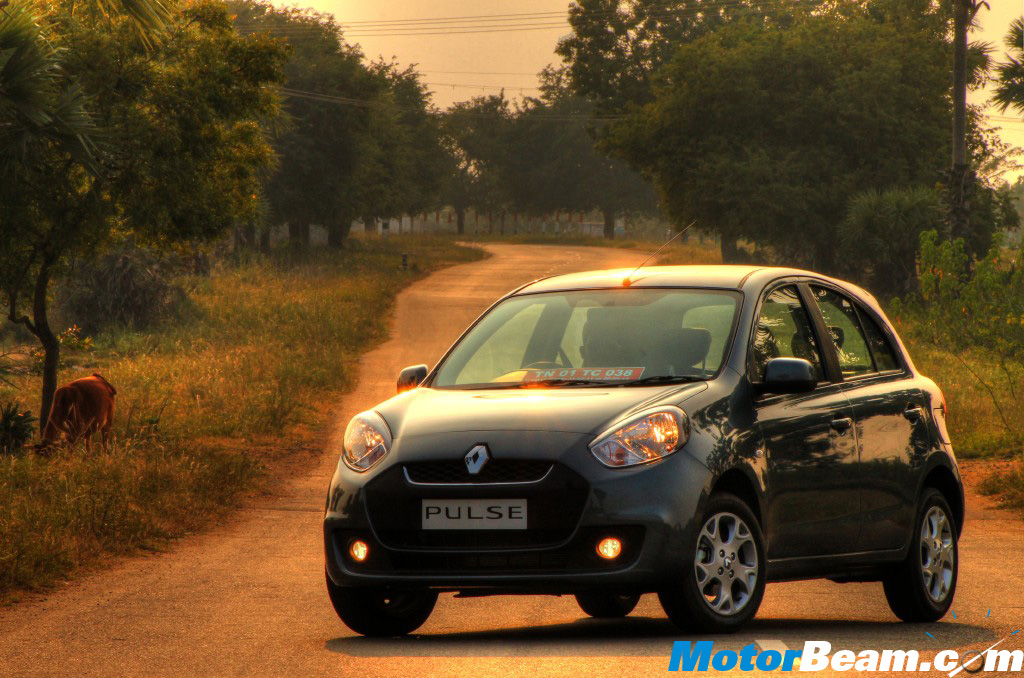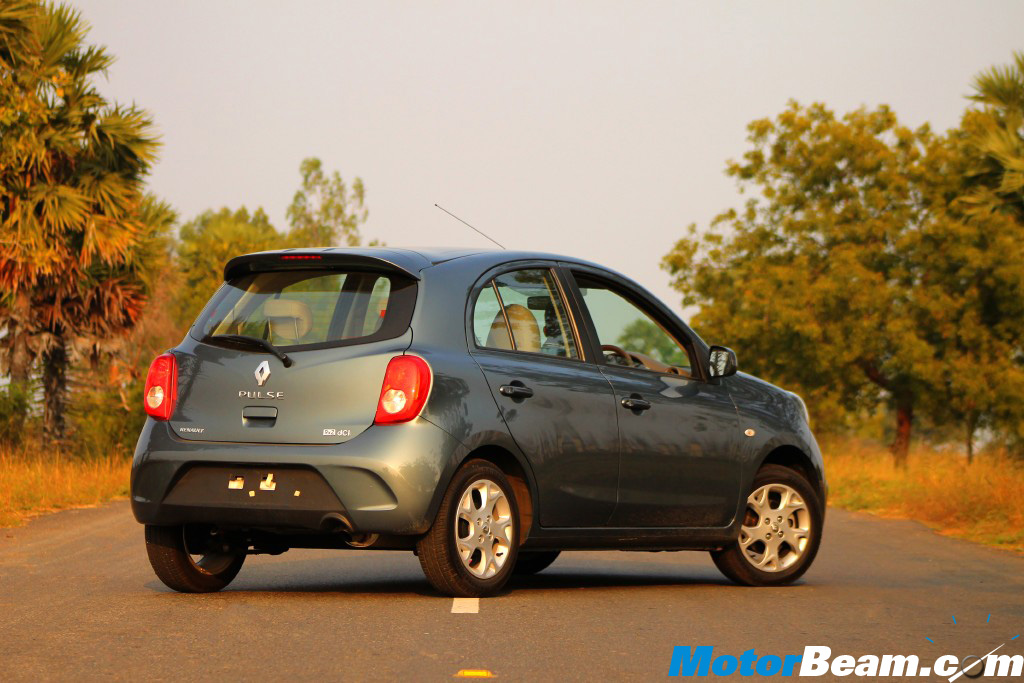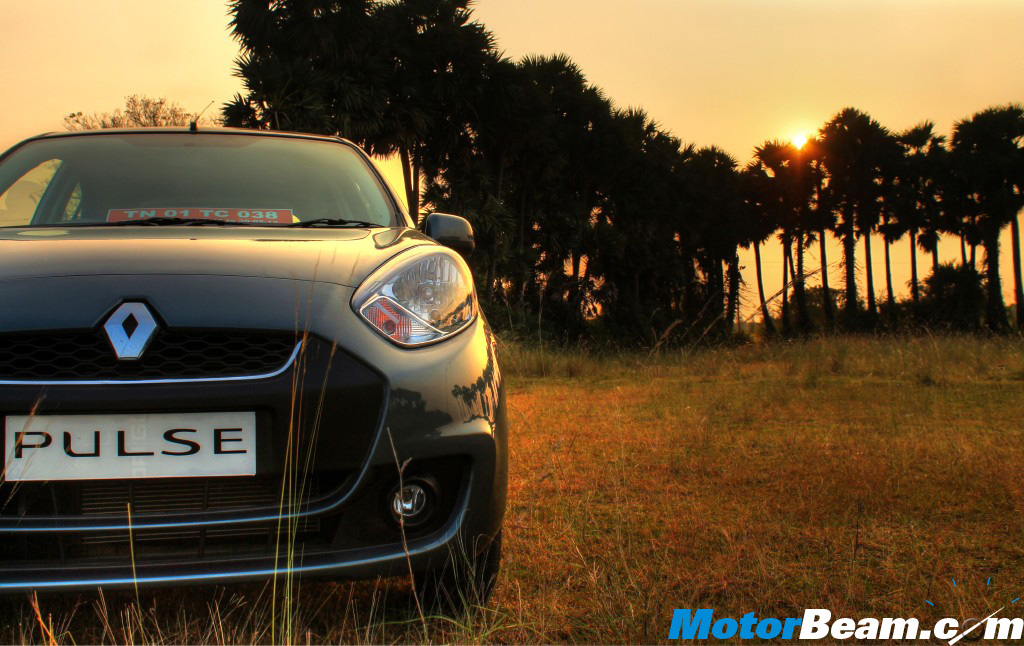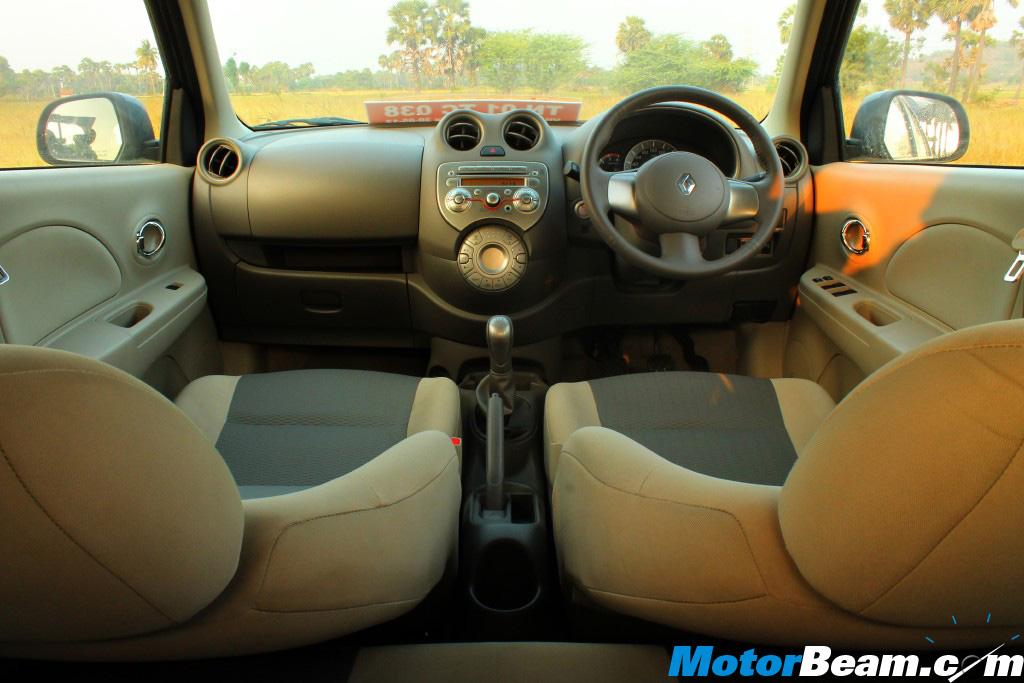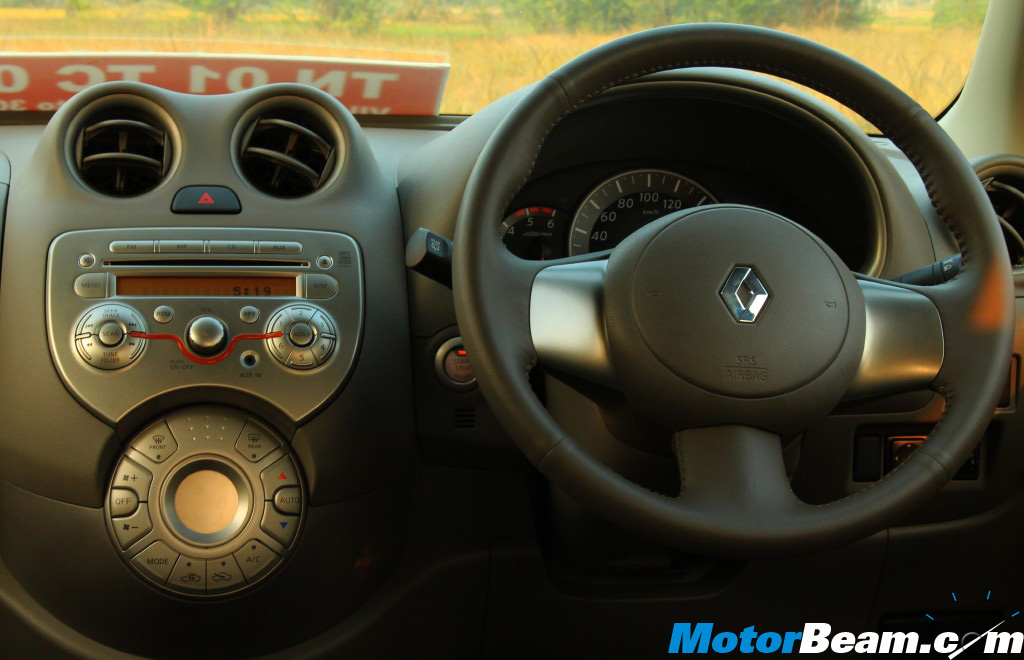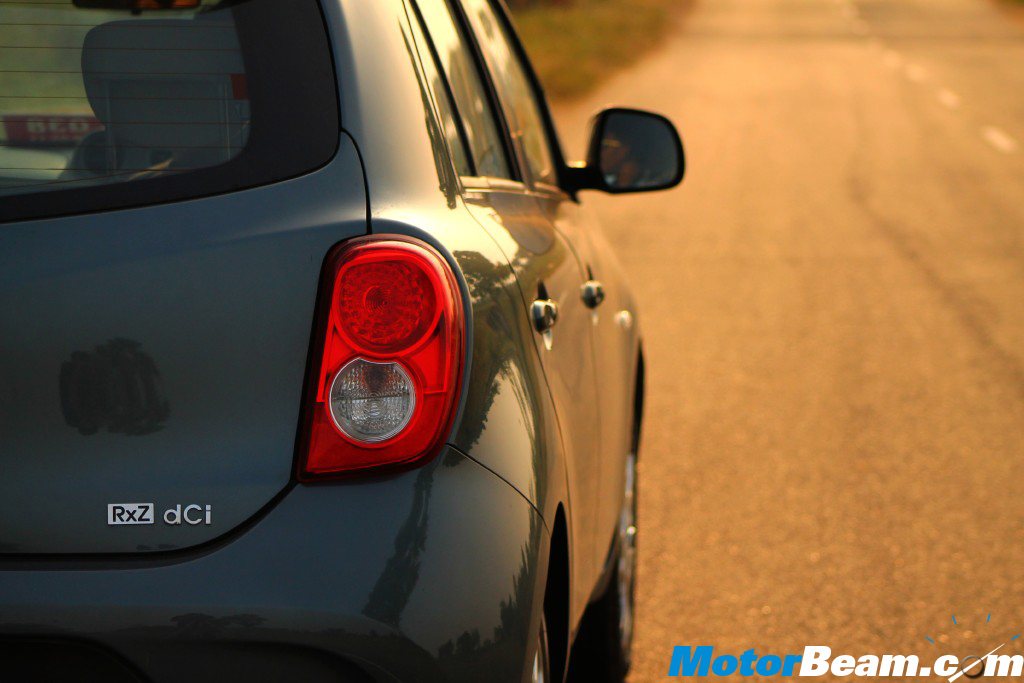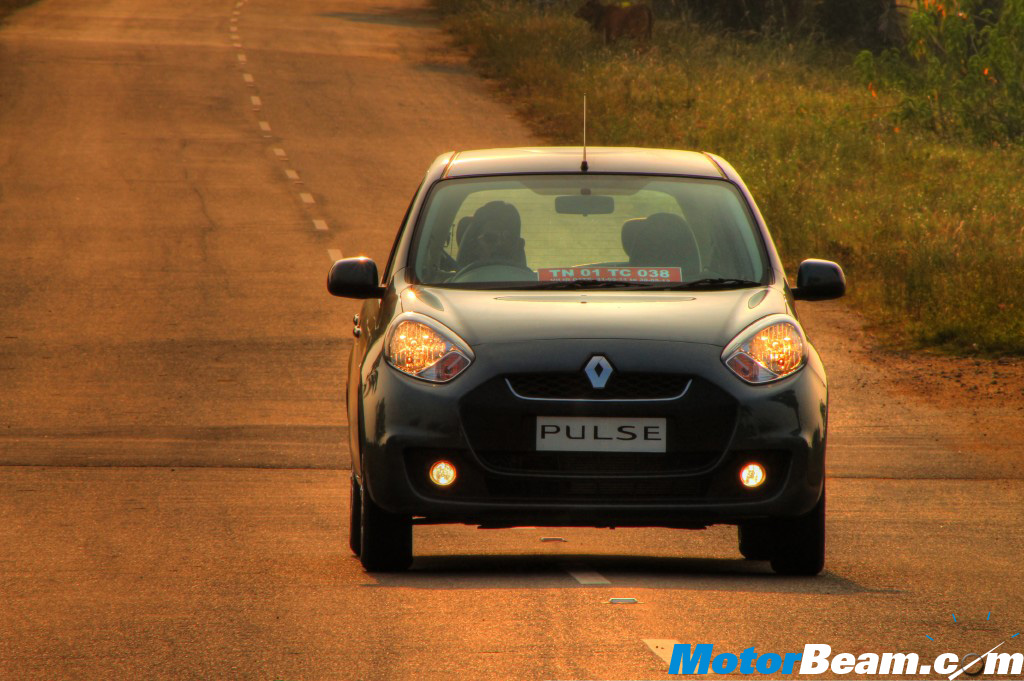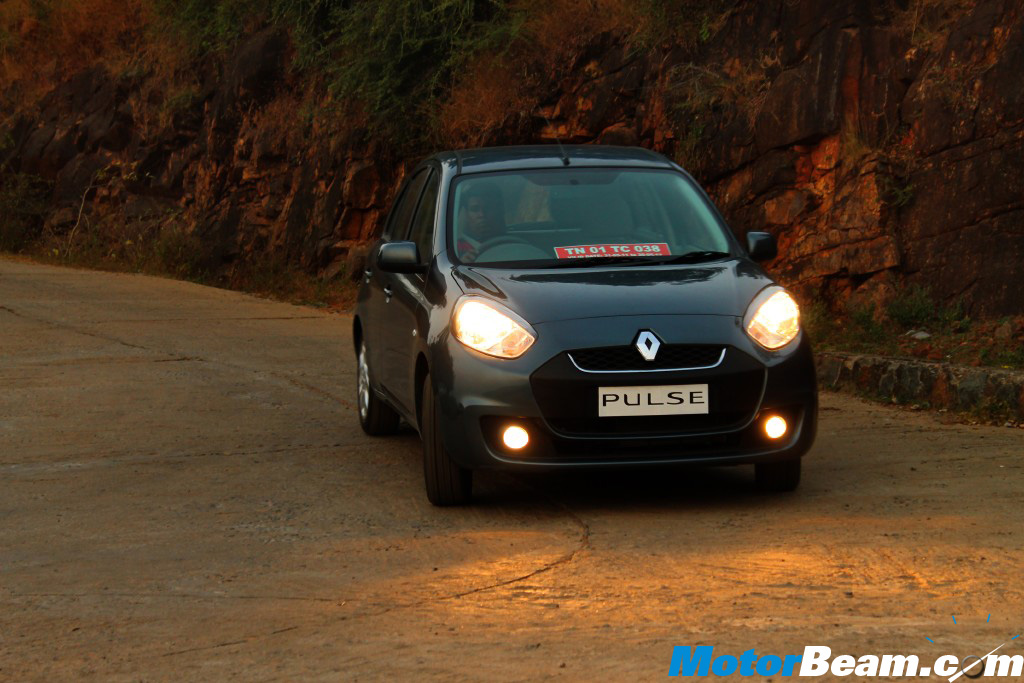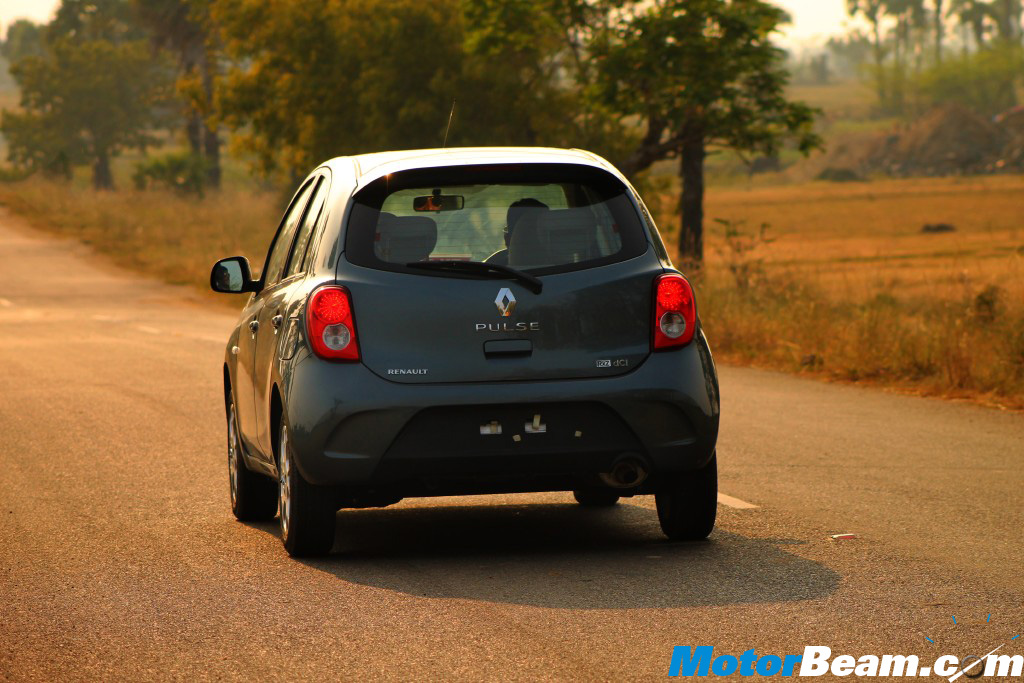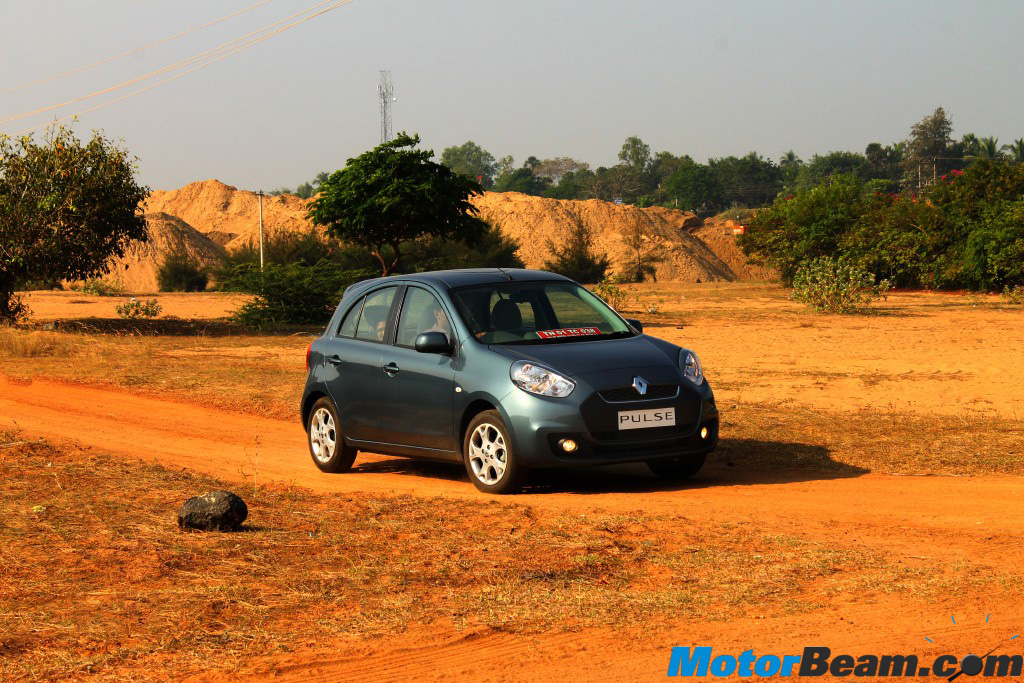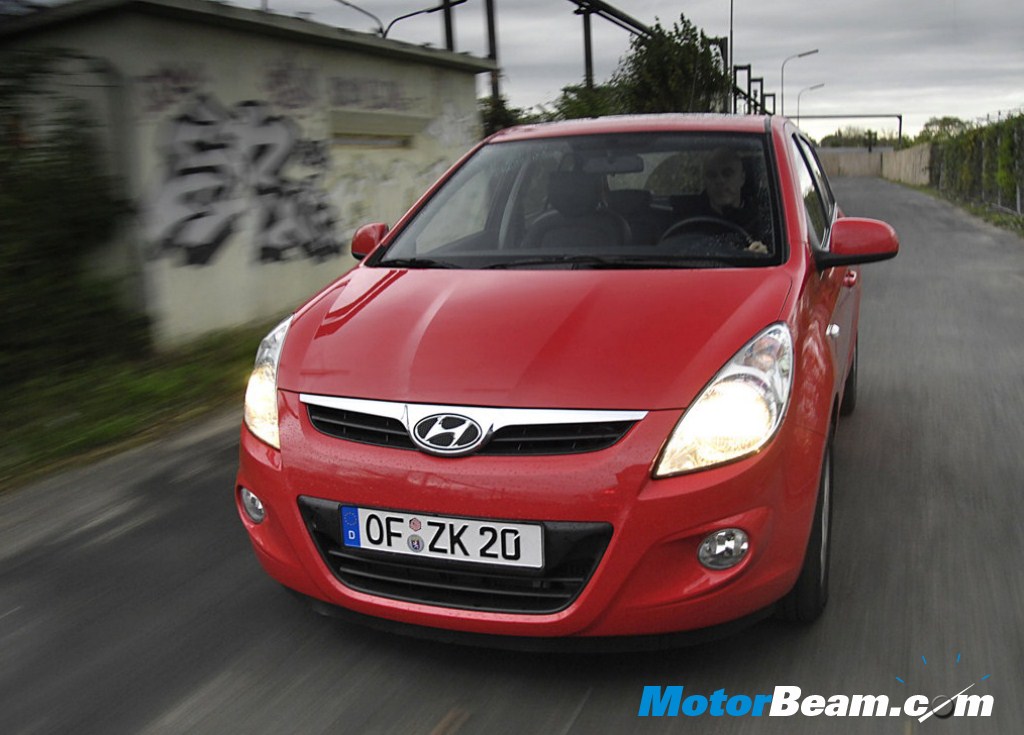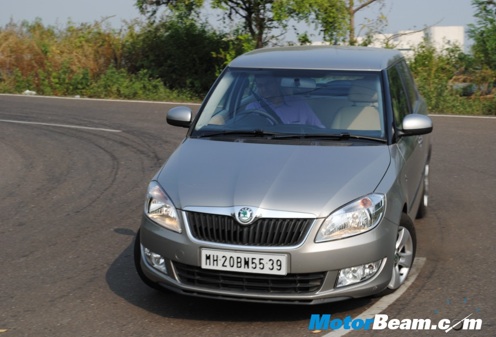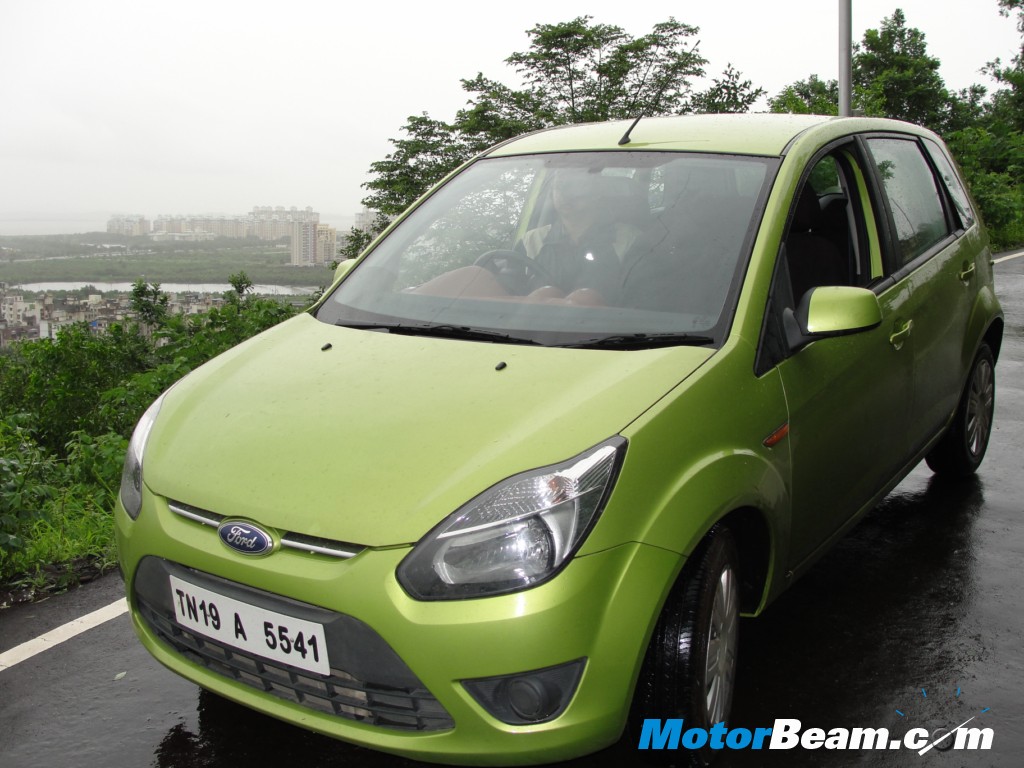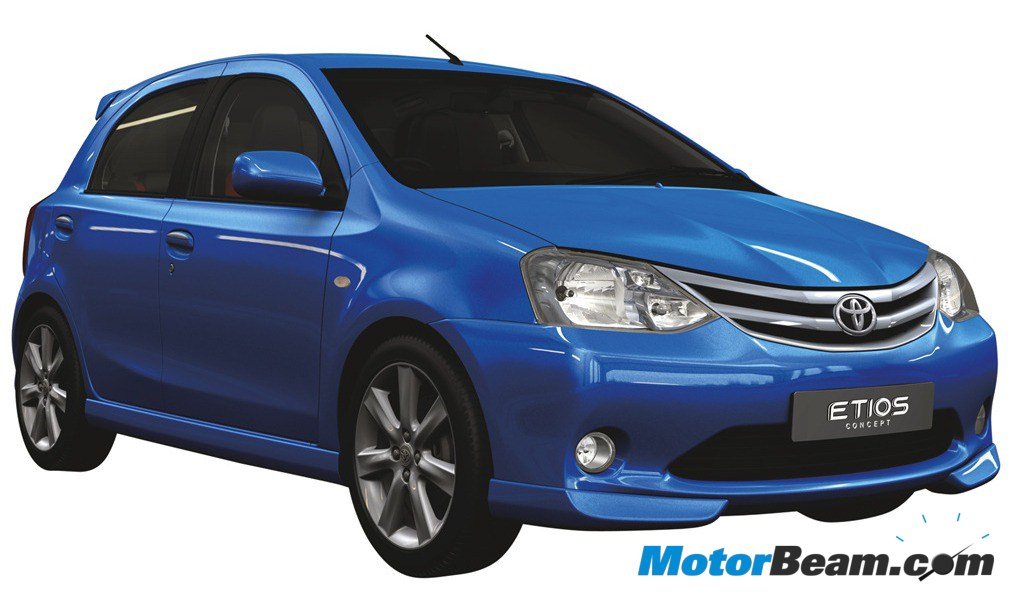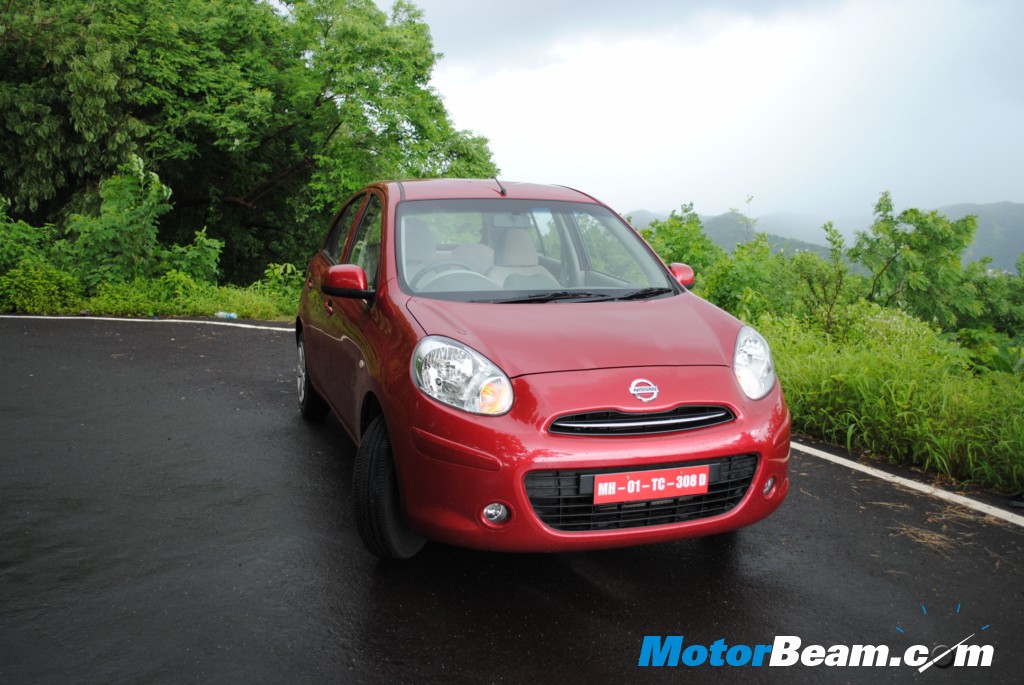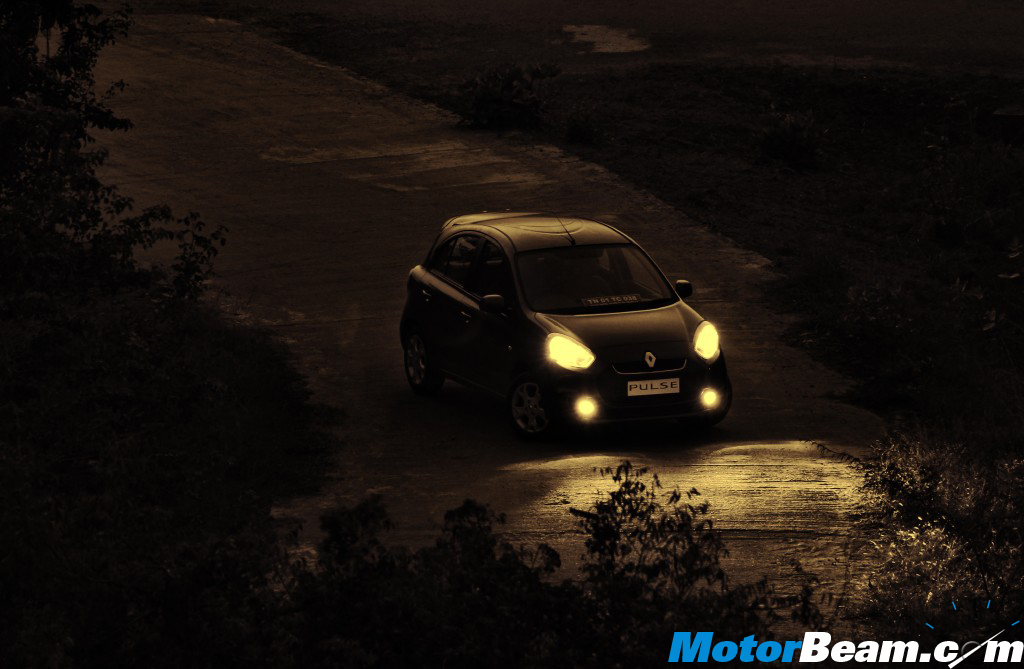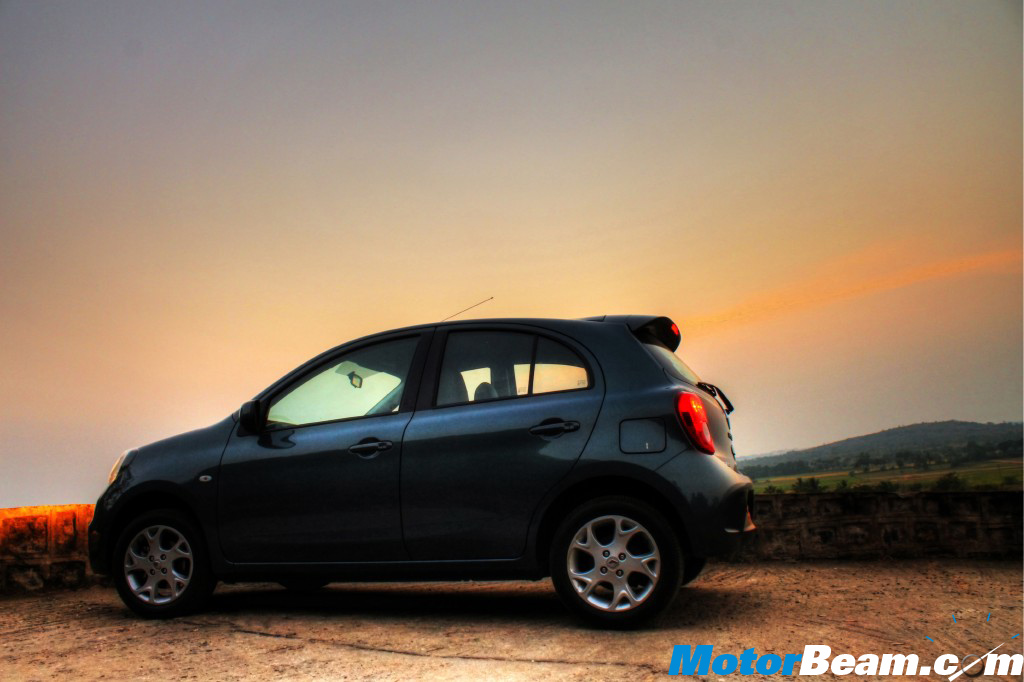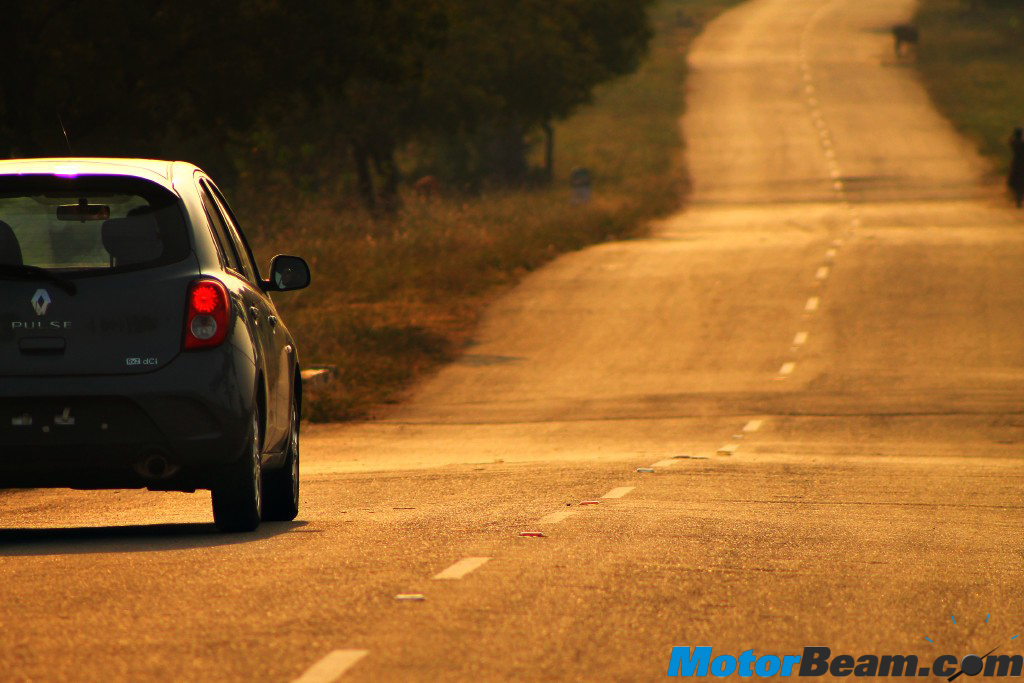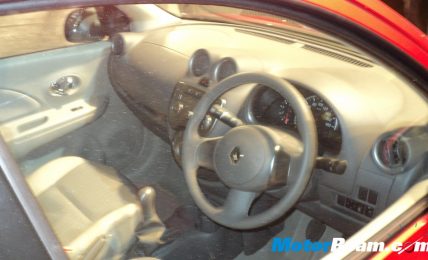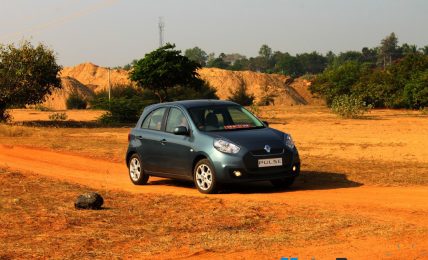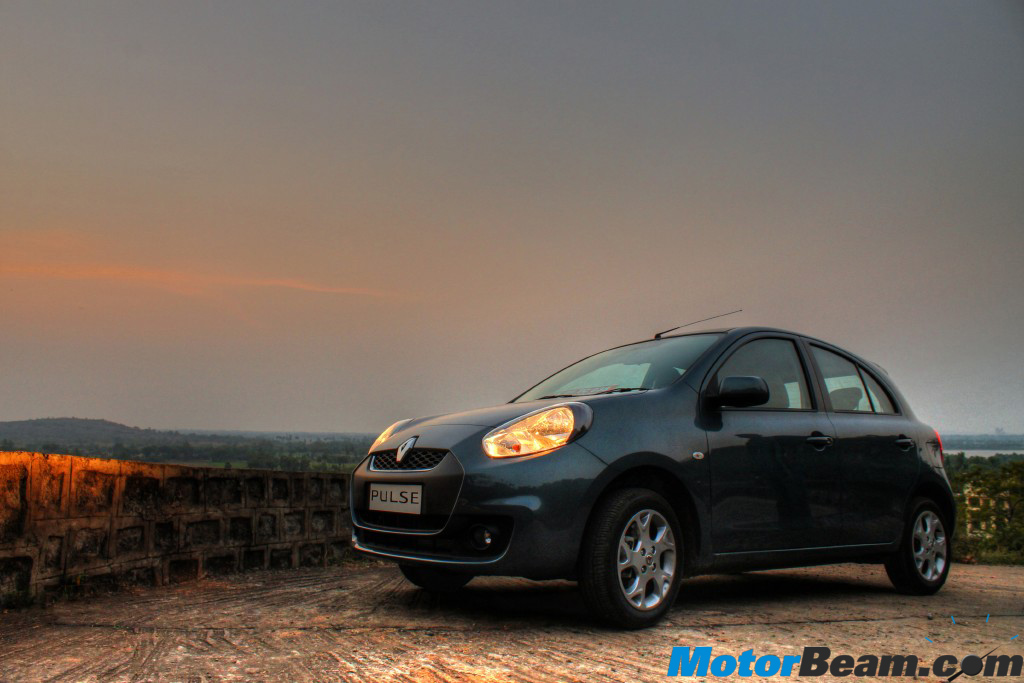
Car Tested: 2012 Renault Pulse RxZ (without Passenger Airbag)
Price On-Road Mumbai: Rs. 7,22,862/-
Renault’s journey in India has not been exactly smooth till date. The company’s first model was the Logan, a low-cost car of the Renault-owned Dacia brand. It not only failed to excite private car buyers in India but also resulted in Renault’s image going for a toss. As if to counter that, Renault started its offensive in 2011 with Fluence and Koleos, two premium-priced models that gave the ‘Renault’ badge some much needed boost. But the company knows well that it is missing in action from the segment that matters most – the quintessential ‘small cars’.
When Nissan, their global alliance partner has the Micra that is being built in India and exported to many countries, why should Renault worry? Or that’s what the company’s management thought and, as a result, here comes the Renault Pulse. So, is Renault finally set for scripting a big success story in our market? Read on, to find out.
Exteriors
Just one look at the Pulse and you know that it is nothing but a rebadged Nissan Micra. When the top honchos at Renault gave the job of making the Pulse out of Micra, they have apparently instructed the team to not fiddle around much with the basic design. As a result, the Renault Pulse shares most of its exterior components with the Nissan Micra with only a few nips and tucks here and there. And boy, have they succeded big-time. Gone are the Micra’s cute looks that gave it a feminine image. The Pulse is all aggressive and gains a new-found attitude that was totally missing in the Micra.
The front-end of the Renault Pulse, with its large trapezoidal grille, bigger and wider air-dam and three-dimensional headlights, is what you will immediately notice. And it is these bits that lend the all-important character to the Pulse. Subtle design elements like the protruding edges of the front bumper, the ridge at the bottom of the doors, scoops in the rear bumper, the diffuser-style black plastic that doubles up as number-plate holder, the tweaked tail-light lenses and the beautifully-positioned ‘Pulse’ badge at the rear make the car look much better than the Micra itself. The alloys look stunning too and needs a special mention here.
Interiors
Step into the Renault Pulse and you are in for a shock. The similarity in exteriors is nothing when you consider what you get inside. Except for the Renault logo in the steering wheel, every other switch, button and controls are lifted straight from the Micra. Nevertheless, the interiors are a nice place to be with Renault’s ‘greige’ (a mix of grey and beige?) texture lending a touch of airiness to the ambience. The overall fit and finish in the Renault Pulse is good but nowhere near the Honda Jazz, which is still the benchmark when it comes to interior quality, fit and finish.
Though Renault has successfully curtailed the girlish looks outside, it couldn’t do the same inside. There is still an overdose of circular design theme with air vents, climate control system, center console, steering wheel boss and just about everything else being circular or oval in shape. The chrome-ringed door handles though look and feel rich and works like a charm. The top-end RxZ model that we drove was loaded with features with the smart key fob and the ‘engine start’ button being the highlight. Though the Micra comes with both petrol and diesel engine options, the Pulse, for the moment, comes with a diesel engine only.
There are two variants on offer – the medium RxL and the top-end RxZ. There is no bare-bones version on offer. Passenger Airbag is offered as an option on both variants but the omission of ABS (even as an option) in both variants is shocking. It’s high time manufacturers give a serious thought about providing atleast ABS as a standard feature across segments given the excellent highways that we have in our country now. In any car, at any price, safety shouldn’t take a backseat and come as an optional extra.
Ride, Handling and Braking
The wonderful suspension in the Logan has made us all die-hard fans of Renault and the Pulse is no different. It rides well, absorbing bumps and potholes with minimal fuss and isolating the passengers from the road conditions below. It may not be ‘the best’ in its segment when it comes to ride but the Pulse is definitely up there amongst the best. Handing is great too with the super-light steering proving to be a boon inside the city. Bumper to bumper traffic encounters are effortless with the Pulse making light work out of it.
Unlike many cars that compromises high speed characteristics for a superlative drive inside the city, the steering of the Pulse weighs in nicely as speeds build up and gives positive feedback. Europeans have always been adept at tuning ride and handling characteristics and Renault has earned a reputation out of it globally, given its sporty heritage and Formula 1 experience. The Pulse, though a Nissan under the skin does not exhibit its Japanese inheritance out on an open highway. Stability at high speeds is superb and the Pulse rides, handles and feels like a car from a higher segment.
Braking is one sore point though, as the pedal lacks bite and feels spongy. It takes some time getting used to and the lack of ABS definitely doesn’t help the proceedings here. Again, stability under braking is good though and the Pulse doesn’t get unsettled under sudden braking. It is only when you suddenly encounter a really shoddy stretch of road that the Pulse gets slightly nervous to maneourve.
Performance
Powering the Pulse is the same and now-familiar 1.5 liter K9K diesel engine that produces a maximum power of 63 bhp and a maximum torque of 16.3 kgm. We have got to appreciate this engine in the Nissan Micra and Sunny and drving the Pulse just reinstated the fact to us. Refinement levels though good is not what we would call great, especially at higher revs when it gets clearly throaty. The smoothness of a petrol engine is just not there and you know that there is a diesel engine under the hood the moment you turn the ignition on.
The absence of turbo lag and the brilliant low-end half-throttle responses make the Pulse one of the best cars to drive in choc-a-block city traffic. Mid-range is good too but the turbo-kick that enthusiasts in us love in cars like the i20 is absent here. As speeds build up though, you start feeling the lack of top-end grunt and maintaining good speeds in highways will be a challenge, requiring constant gear changes to tap the available power. Gear shifts are notchy too and not particularly smooth.
Quick Comparison With The Competition
[singlepic id=10617 w=540 h=375 float=center]
1) Maruti Suzuki Swift – As it has always been, the Swift is the current segment benchmark and the model against which every other premium hatchback is targeted. The all-new second-gen model has addressed all the shortcomings of the previous model with plusher interiors, better ride and handling and improved fuel efficiency. With tried and tested Multijet engine and Maruti’s wide dealer network, the Swift will continue to be the segment leader.
2) Hyundai i20 – The i20 has been a massive success for Hyundai and the only other car that sells in such significant numbers in its segment, apart from the quintessential Swift. The i20’s major negative aspect is its high-speed handling which is soft and bouncy. However the interior quality and features on offer can put many cars from a segment above to shame. Decent boot space and Hyundai’s vast dealer network are its other positives.
[singlepic id=6381 w=540 h=375 float=center]
3) Volkswagen Polo – Polo’s clean design, extremely well-tuned ride and handling characteristics and German build quality impresses but the car has its own share of flaws, the most notable being its strictly average engines and less-than-adequate legroom both at the front and at the rear. More powerful 1.5-liter TDI engine with more standard features can make the Polo a very tough model to beat.
4) Skoda Fabia – Just like the Pulse and Micra, the Fabia shares its underpinnings with the Polo but, with its superior passenger space, more standard features and lesser price, the Fabia has all the bases covered. Factor in the excellent ride and handling balance and the only real show-stopper becomes Skoda’s poor reputation in service.
[singlepic id=6361 w=540 h=375 float=center]
5) Fiat Grande Punto – The Italian beauty is a stunner to look at but the car never took off in India due to Fiat’s poor brand image, lack of proper marketing and the below-par levels of service offered by Tata-Fiat dealers. To its credit, the Punto offers the finest ride and handling in its segment that can teach a lesson or two to cars a couple of segments higher.
6) Ford Figo – The Figo has been a huge success for Ford in India and you need not dig deep for an answer. Its priced aggressively, is touted as the best driver’s car in the segment and the TDCi engine is modestly peppy yet frugal. Average equipment levels, lesser ground clearance and lack of rear legroom are some of its disadvantages.
7) Toyota Etios Liva – Brand Toyota is as strong in India as it ever was and that is reason enough for the car to sell in thousands. Acres of passenger space, extremely reliable and frugal diesel engine and a value-for-money price tag are its strengths but, surprisingly for a Toyota, quality levels are sub-par with shockingly obvious cost-cutting efforts.
[singlepic id=7140 w=540 h=375 float=center]
8) Tata Indica Vista – Coming from the home-grown Tata stable, the Vista remains a very practical car in the hatchback segment but poor quality and brand image have ensured that the Vista never really sold as much as it should. The Vista cannot hold a candle to its competitors when it comes to handling and driver involvement but makes up for it with much more passenger space and extremely frugal engine.
9) Nissan Micra – Having come to the end of the review, you would now know the strengths and weaknesses of the Pulse and every single point holds good for the Micra too. In our opinion, the Micra is not a competitor to the Pulse but more of a sibling which will aid the Pulse in taking away a bigger chunk of market-share from the competition.
Conclusion
The Renault Pulse may be nothing but a Nissan Micra with make-up but the car has a lot of factors going for it. The top-end Pulse RxZ (without optional passenger airbag) retails for a price that is significantly cheaper than similarly-specced Micra Diesel. According to us, the Pulse looks and feels better than the Micra and, at such price levels, we wouldn’t be really surprised if the Pulse starts selling better than its Nissan sibling. Renault finally has a model that has a chance of making it big in India. On the flip side though, Nissan has earned a really good image with the masses despite being a late entrant in our market and it has to be seen whether Renault, with its taxi-image thanks to Logan, can outdo its partner in this department.
What’s Cool
* Peppy and Frugal K9K Engine
* Sorted Ride and Handling
* Effortless city-driving characteristics
What’s Not So Cool
* Spongy Brakes and Lack of ABS
* Limited variants and sole engine option
* Sparse Dealer Network
Renault Pulse Specifications
* Engine: 1461 cc, 4 Cylinder Inline, SOHC K9K
* Max Power: 64 PS @ 4000 RPM
* Max Torque: 160 Nm @ 2000 RPM
* Transmission: 5-speed Manual
* Fuel Efficiency: 23.08 km/l
* Tires: 175/60/15 (RxZ)
* Safety: Driver Airbag, Passenger Airbag (Optional), Immobilizer
Renault Pulse Dimensions
* Overall length x width x height: 3805 mm X 1665 mm X 1525 mm
* Wheelbase: 2450 mm
* Fuel Tank Capacity: 41 litres
* Boot Space: 251 litres
Text: Aravind Ramesh; Photography: Arun Varadarajan & Aravind Ramesh


